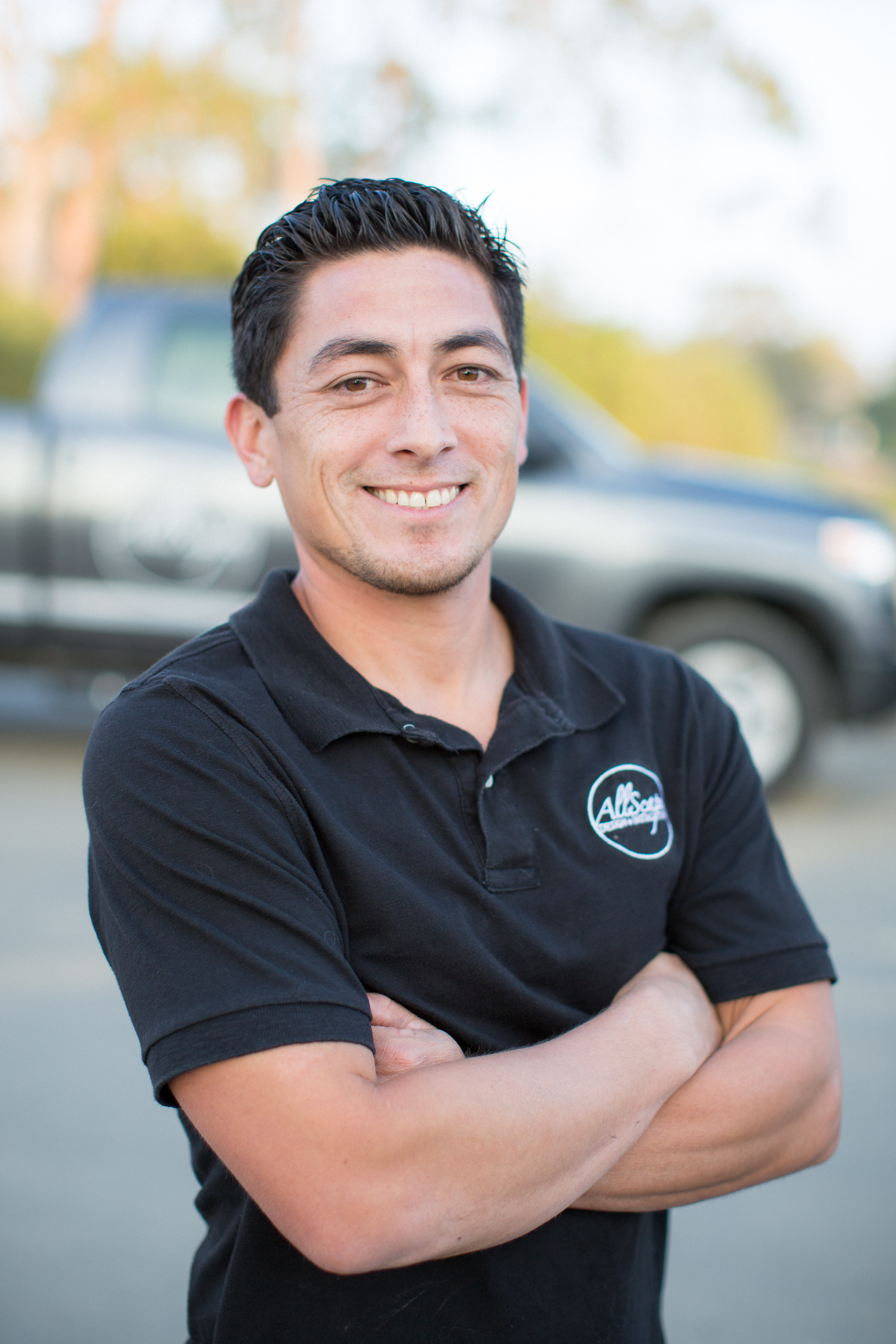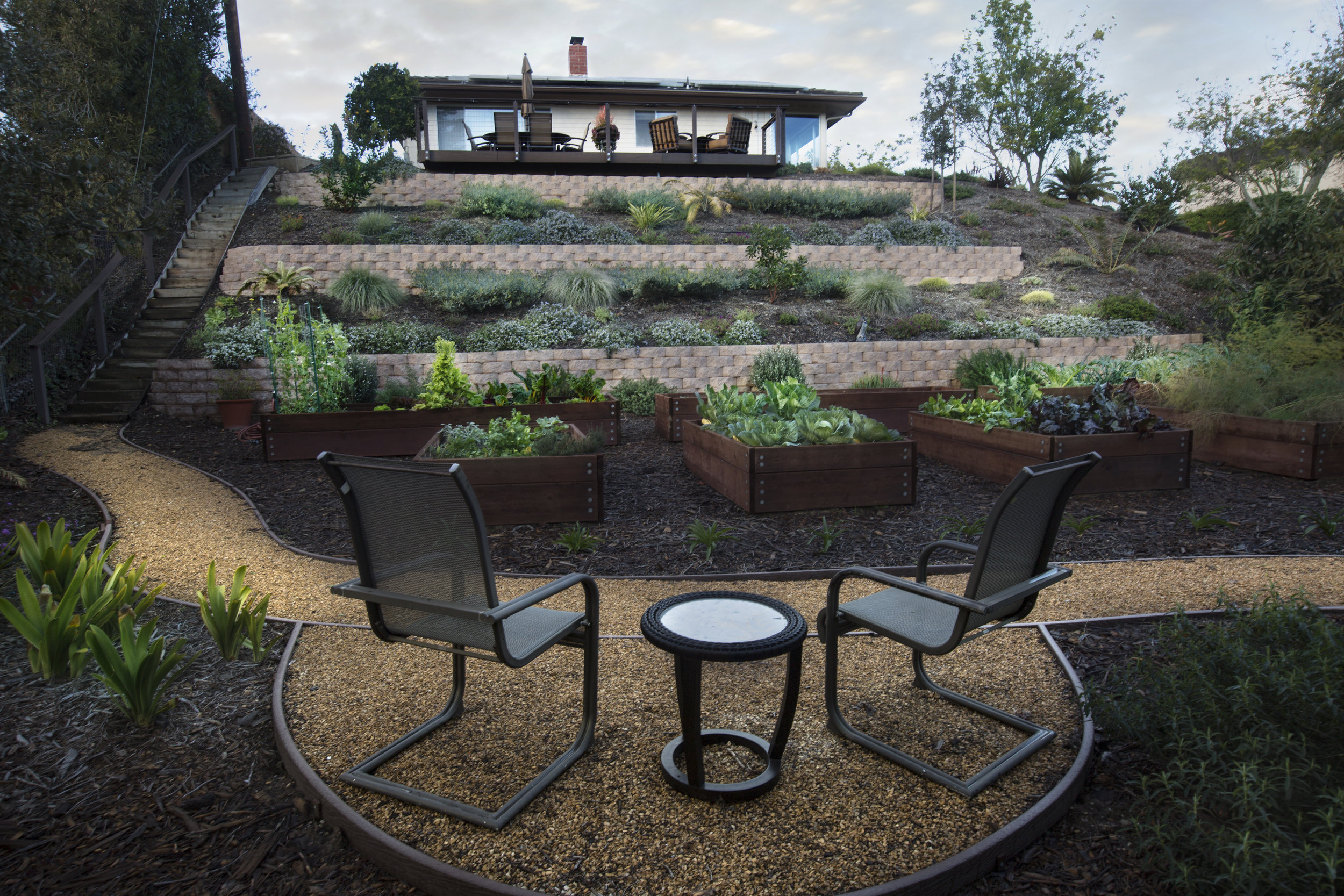Kat Hitchcock’s Interview With Nate Zacarias and Ben Hatcher owners of AllScape Design + Installation
Kat: First question, what does being water wise mean?
Nate Zacarias
Nate: It basically means to be efficient with the way you use your water and trying to effectively reduce and save on not only on water but also on cost. Water is expensive it is becoming the new high end gold.
Kat: Exactly, we have sellers that have acres and acres of land and obviously with the drought it has made their water bill more expensive. From a maintenance standpoint they are all trying to figure out the best plan of action.
Ben: There’s a lot of different avenues on ways to save water- whether it's irrigation assistance, drought tolerant plants and adding mulch to absorb moisture when it does rain. There’s a lot of different ways you can reduce the use of water.
Kat: What is the ROI analysis on irrigation projects?
Ben Hatcher
Ben: We calculate the return on investment. We calculate what the customer is currently spending and how long it will take for that budget to pay itself back. On small properties it is very rare. You have to do pretty extensive things to your landscape to create an ROI that is noticeable. Typical ROI’s would pay back in 5-15 years depending on what you do. I think it’s just seeing their water bills go down that makes our clients happy.
Kat: For those who don't know what is the difference between hardscape and landscape?
Nate: Hardscapes are hard materials like concrete, rock work, pathways- anything outside of softscapes. Softscapes would be considered planting and lawn installations, anything that has to do with plant material and gravels. Pathways can be both hardscape and softscapes.
Kat: A lot of our sellers have been putting in fire pits and decking, does AllScape design + installation handle those type of projects?
Nate: Of course. We handle fire pits, any kind of woodwork like fencing, decking, pergolas, we do it all. If we can’t do something we have amazing contractors that can do it.
Kat: What are the biggest mistakes you commonly see when people do their own landscaping? DIY Do’s and Do nots?
Ben: I think going with cheap material. So often when we go on a consultation we find cheap Home Depot material that doesn’t last long, or something not being installed properly. Actually the most common thing we find is irrigation breaks.
Kat: Can AllScape Design + Installation test the irrigation lines for breaks?
Ben: Yep. More often than not we find breaks in the valves or the piping.
Nate: We call this an irrigation evaluation, we evaluate the entire system- find out where the flaws are- find out where you are wasting water, and then give a proposal to fix that at first and then give the customer ideas on how to improve and make it more efficient.
Kat: What makes AllScape Design + Installation different than other landscape companies?
Ben: I think just being on top of our game. We have connections with great sub contractors, our knowledge, and being in the field for so many years.
Nate: Also I think its our communication.
Ben: Communication is key.
AllScape Design + Installation Completed Project
Nate: The fact that we call people back - and we joke that should be our slogan because it’s true- we hear it all the time so many people just don’t call you back.
Ben: And we are on site, on time, if we can’t be there we call ahead of time and just keep the client updated with good communication. Which is lacking with a lot of contractors. It’s something they struggle with. So I think thats the one thing we have built our business on and considered a major part of our success is our communication.
Nate: I also think we are fairly priced. You know were not high end or low end but we are right where we should be as far as what we charge clients. I think that shows.
Kat: That is awesome. What do you find most difficult or challenging as a landscaper?
Ben: Figuring out their budget. It’s not like our prices stay the same, but people struggle to tell us their budget.
AllScape Design + Installation Completed Project
Nate: To know someone's ideal budget is key because it helps me just design what I need to design within that range. Otherwise I have fun with it and make it lavish and then they see the proposal and they get taken aback. If I get a set budget then I can design around that. So that is a challenge when clients don't know ahead of time.
Kat: When someone hires AllScape Design + Installation what should they expect? What sort of planning should you do beforehand?
Nate: If they want to do a project- it is nice to know what type of style. Those are questions I bring to the table. If you want a Mediterranean, drought tolerant, if you want a California garden type, free flowing design, or do you want something more symbiotic and symmetrical. There’s all different styles out there.
Kat: Besides style of project, what else should they expect?
Nate: They usually have an idea and style is number one, and what they want to save. What type of plants they want to be incorporated, what colors, it’s key to know. A lot of people hate oranges and yellows. So we have to ask those questions. Not only what you like but also what you dislike. It helps me figure out the plant palette and what type of movement through the property and sitting areas.
AllScape Design + Installation Completed Project
Ben: Also taking photos of stuff they like, a lot people take photos around the neighborhood of what they do and do not like. Right now our work is a lot of taking out grass and putting in drought tolerant plants. We typically go and meet with them and then ask them what you want to do and that then forms Nate’s idea of what he’s going to design. Then we do digital imaging as a quick test so they can see what they like and don’t like in different scenarios. Then we will talk with them about moving forward.
Nate: Then we can go to the next level and do a blueprint design, a to scale design. Or we can go with the design imaging only and make a proposal based on that. Which would be the cheapest way to go. If they want to spend the extra $500-1000 to get it done right with the blueprint it does help. Then they own it, it is theirs and if they ever want to change anything they have the square footages. If they needed a different concrete contractor to come in and get square footage of the driveway it’s already set onto scale. I always try to push to get design blueprints done- but in the landscape world things move so fast.
Kat: So what do ya’ll think of all this amazing rain?
Nate: Love it. Need it.
Kat: Do you think it is going to change anything in landscape world?
Ben: I hope it changes people’s philosophy about what a yard should typically look like. I hope we go away from the thought of huge lawn areas being ideal. You know typically you don't use your front yard as much so take out the front yard grass and just be more mindful of the water.
Nate: The problem is people see rain and think they can instantly go back to their old ways. I hope through all the education from the Santa Barbara and Goleta water districts people will think differently. The water districts did an amazing job getting people educated about being water wise.
Kat: Okay, one more question. What do you love most about what you do?
Nate: From day one in this industry I have always loved not only the creative part of it but its seeing a crappy yard transition into something special and unique. You know home owners have to live with it every day. I like seeing the transition and happy customers which is why I got into it. To help people out and I love being outdoors.
Ben: Like Nate said being able to walk away from a project and transition something into such a big difference. Building something, making something and getting to work with the clients.
Kat: I feel like I have met a handful of your clients and they are all extremely excited with the finished projects and love working with you guys.
Nate: It’s a good community we live in and its fun to create those relationships with clients.
Ben: We are kind of friends with a lot of them. We would see them out around town and go have a beer together. I think that is kind of special.
Kat: We love sending you guys business, thank you for being so great to our clients.
AllScape Design + Installation free digital imaging draft for your next project when you mention Ralston and Hitchcock!










 As the economy continues to improve, more and more Americans are seeing their personal financial situations also improving. Instead of just getting by, many are now beginning to save and find other ways to build their net worth. One way to dramatically increase their family wealth is through the acquisition of real estate.
As the economy continues to improve, more and more Americans are seeing their personal financial situations also improving. Instead of just getting by, many are now beginning to save and find other ways to build their net worth. One way to dramatically increase their family wealth is through the acquisition of real estate.
![Home Equity Increasing as Home Prices Rise [INFOGRAPHIC] | Keeping Current Matters](http://www.keepingcurrentmatters.com/wp-content/uploads/2015/12/Equity-Infographic-KCM1.jpg)
 In a recent
In a recent 



 Colorful, luxurious and versatile, Boho chic style is perfect for spacious home interiors and small rooms. Boho chic ideas can help add luxury to small rooms, and create inviting and cozy home interiors in spacious living spaces.
Colorful, luxurious and versatile, Boho chic style is perfect for spacious home interiors and small rooms. Boho chic ideas can help add luxury to small rooms, and create inviting and cozy home interiors in spacious living spaces.  There has been much written about how dramatically home values have increased over the last several years. With the increase in values, comes an increase in the equity each home owning family now has. The Joint Center of Housing Studies at Harvard University recently reported that, after taking inflation into account, aggregate home equity has increased 60% since 2010. Home equity is the major component of most family’s overall wealth.
There has been much written about how dramatically home values have increased over the last several years. With the increase in values, comes an increase in the equity each home owning family now has. The Joint Center of Housing Studies at Harvard University recently reported that, after taking inflation into account, aggregate home equity has increased 60% since 2010. Home equity is the major component of most family’s overall wealth. The most recent Housing Pulse Survey released by the National Association of Realtors revealed that the two major reasons Americans prefer owning their own home instead of renting are:
The most recent Housing Pulse Survey released by the National Association of Realtors revealed that the two major reasons Americans prefer owning their own home instead of renting are:
![Buying A Home Can Be Scary... Until You Know the FACTS! [INFOGRAPHIC] | Keeping Current Matters](http://www.keepingcurrentmatters.com/wp-content/uploads/2015/10/Mythbusters-KCM.jpg)